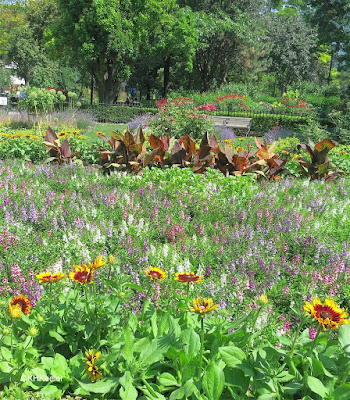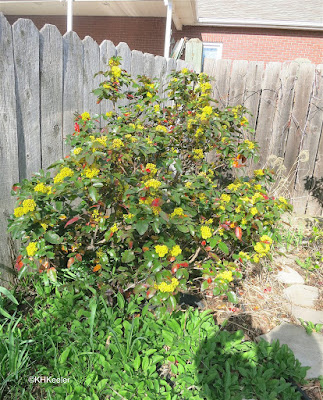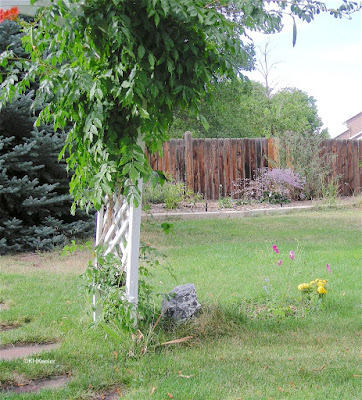 |
| Lilacs always remind me of my childhood in New York and Ohio, but they are not native to North America |
Rarely do we consider what "home" was like fifty years or two hundred years before we grew up there.
And yet, for North America, likely you wouldn't recognize home if you went back very far in time.
My neighborhood in Colorado was probably wheat fields fifty years ago.
Fifty years before that it was native vegetation, likely shortgrass steppe.
Older places may have had more transitions before getting back to native vegetation.
The plants of today are familiar and yet they have been gathered from all over the world. Crops came to North America from Europe. None of the crops raised in northern Colorado is native here; even those native to North America are from elsewhere in North America.
Foreign house and garden plants came first with the settlers, then in waves as the latest new thing was introduced, resulting in a complex mix.
 |
| weeping willow, Salix babylonica |
It is shocking to realize how much most places have been transformed. I visited Costa Rica in February and applauded their attempts to preserve their biodiversity. Then I came home and realized that 200 to 400 years ago, Americans devastated the biodiversity of North America. We were lucky it was so big and that plants and animals are resilient: the extinction rate could have been much higher.
But as we settle in to live in North America with 21st century yards, roads and industries, we are likely to unknowingly destroy the last refuge of our native plants, insects, birds...not just the big ones that obviously in trouble because they need space, but all of them.
Flowering trees from Eurasia are beautiful, but we eradicate native plants to plant them. Lots of European plants are easier to grow and control than American plants, because hundreds of years have been spent domesticating the European plants and only a fraction of that time has been spent on the American plants.
If we all grow the easy, familiar plants, we will end up with a homogenized world, where all the same plants are planted everywhere. You'd not need to go beyond Pennsylvania to see "temperate"--Canada or China or most of the world will look the same.
 |
| Philadelphia, Pennsylvania, USA |
 |
| Toronto, Canada |
 |
| Beijing, China |
I don't see changing yard styles quickly, but creating a yard with local character, that says "Colorado" or "Michigan" or "Alabama" builds on local strengths. My yard has lots of aliens, chosen by the previous owner, the landscaper, and me. I'm not throwing those plants out any time soon, what I am trying to do is, when I need a new plant, add a native.
 |
| I didn't plant this creeping barberry (Berberis repens, previously Mahonia repens barberry family, Berberaceae) birds dropped the seeds. It is native and I am very happy with it. |
 |
| I did plant the sidebells penstemon, (Penstemon secundiflorus, plantain family, Plantaginaceae) and I am pleased that it is steadily spreading. |
Comments and corrections welcome.
Kathy Keeler, A Wandering Botanist
More at awanderingbotanist.com



A beautiful article supporting the planting of native species. Love the photos showing that Philadelphia, Toronto , and Beijing all look alike in choices of plantings!
ReplyDelete